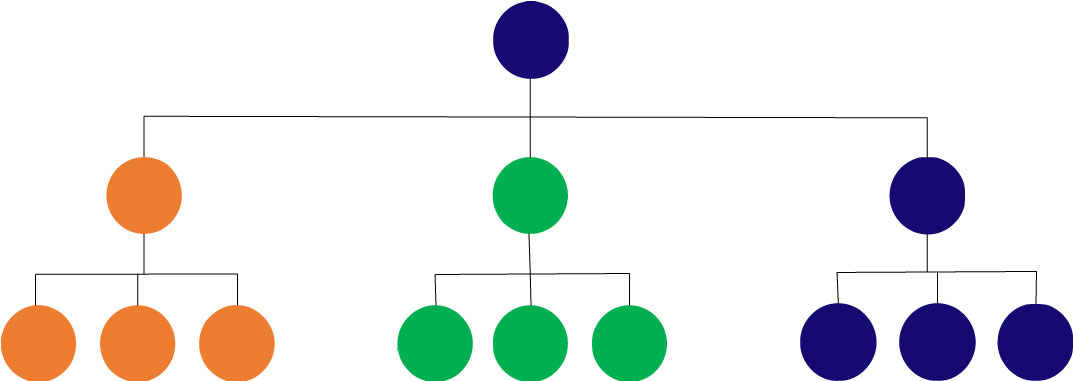I’m going to dispel a commonly communicated falsehood: there are no born leaders. Leadership is a skill and good leaders continually hone that skill. Unfortunately leadership training doesn’t always accompany the rise to leadership. As a result, there are extremely smart, committed people in leadership positions who don’t necessarily understand how to position their team for greatest success.
Good leadership should inspire a team, organize work for greatest impact, promote positive team dynamics, and groom the next generation of leaders. Less skilled leaders often do the exact opposite, creating rather than solving problems.
Leadership skills take more than a blog to impart. However, as a start, here are five strategies that can make immediate improvements in your leadership style.
Reframe decision making to avoid “group think”
Leadership is not a co-op. Less skilled leaders often confuse “gathering input” with “group decision making.” Strive for the former, not the latter. Engage your team and make them feel they can bring ideas and input to you. But do not create an environment of Freirian leadership where your team feels it’s their right to weigh in on everything and decisions are collectively determined. This is such a common issue, we’ve taken a deeper dive on it in our blog article: A Frearian Fiasco: the problem with Freirian approaches in leadership. There’s a time and a place…and most importantly a productive way to be participatory. If you don’t hone your leadership skills in this area you risk becoming a facilitator rather than a leader.
Create a pyramid organization
When I’m brought in to work with a team, the first thing I’ll ask to see is the org chart. And it often looks something like this:

There is no possible way a leader can effectively manage a team that is structured this way. It forces the leader to be too in the weeds, with too many direct reports. It creates a team dynamic that is unstructured and inefficient. But many less skilled leaders like this model because they “have their finger on everything.” But that isn’t the job of a leader – this model creates a “Jack of All Trades and Master of Nothing” leader. You don’t need to know everything – you need trusted, skilled “deputies” who collectively know everything and help you focus your energies where most needed to drive success. For that happen, your org chart should look more like this:

This structure allows you effectively manage a team by investing in and working closely with “deputies” who are responsible for defined areas. Their teams report to them and they report to you. This way you can focus on just the issues that need senior leadership rather than the management and administration of everything. A word of caution when you switch to this model – stick to it. Do not undermine your new deputies’ abilities to build their teams by letting staff circumvent them and come directly to you.
Avoid a focus on “fairness”
I know, that sounds like the opposite what you should do but when you focus on being “fair” to individuals the team loses. When I ask leaders why they are focused on “fair” I often hear that they want people to be happy and feel valued. I agree, but a focus on “fairness” won’t deliver that result. That’s because many leaders equate fairness with equality and kindness. Let’s look at each individually:
- Equality: In order to build a productive team and a positive work dynamic, you need to recognize that not all things are equal. Instead, focus on building the skills of the individuals that make up your team – different team members will need different things to be at their best. Recognizing those differences and investing in improving skills is what makes team members happy and valued. Put it together and it looks something like recognizing the differences in your team members – finding ways to encourage the high performers and ways to guide others so they can grow into working at their highest potential. This is what fairness looks like when you’re focused on the team and not the individuals. It will result in a team that delivers great results and is happy to do be doing so.
- Kindness: Kindness and fairness are not synonymous. While I don’t advocate for a “fairness” centered leadership style, I do advocate for kindness. You do want to create a positive work culture. But you can do those things while recognizing the differences in skills in your team.
Be a master communicator
Communication is what you say for sure, but it’s also how you say something, and how your actions support or undermine your words. Think through your plans before you communicate them – are your actions in line with what you want to say? Are you avoiding certain conversations because they are difficult? As the leader, people take their cues from you. And what you do says far more than what you say.
Say the same thing to everyone all at once
Say what you mean, mean what you say and say it to everyone. The easiest way to create confusion and division is to have separate conversations. It allows team members to interpret individualistically rather than understand something as a team. This is particularly true when it’s a tough conversation like a change in direction or roles. You don’t want to blind-side someone with information that will personally affect them – so talk to them first to give them a heads up. But then have a team wide meeting where you communicate the new direction to everyone at the same time. Be sure to invite questions for clarification and let the team know that you are open to hearing their concerns but do not open the conversation up for debate. If you do, you will give the impression that the meeting about about discussing the pros and cons but that the decision hasn’t really been made one way or another just yet. It will delay your ability to move forward and impede your team’s ability to be successful.
There’s no faster way to tank a project than not to have strong leadership. Spend the time to hone your skills and you will be helping your team deliver successes. If you’d like help in developing the leadership skills within your organization, we can help. Contact Amy at [email protected]







